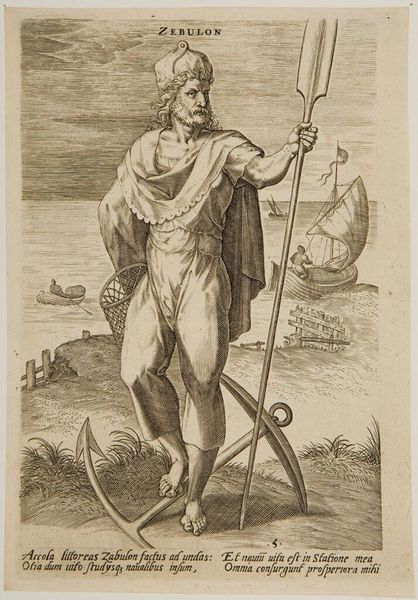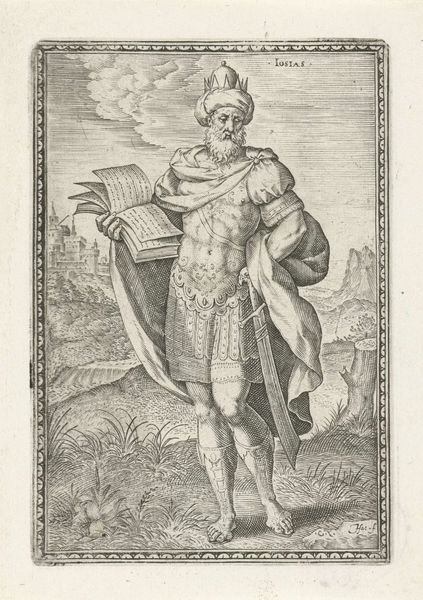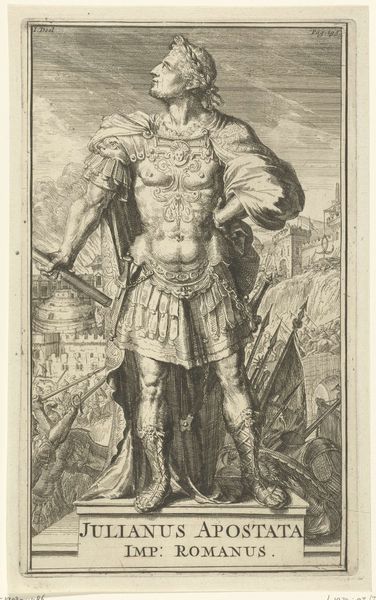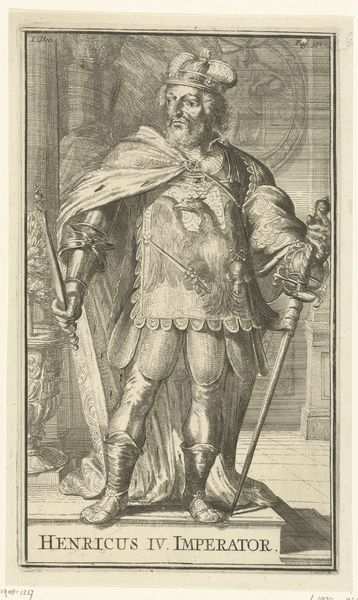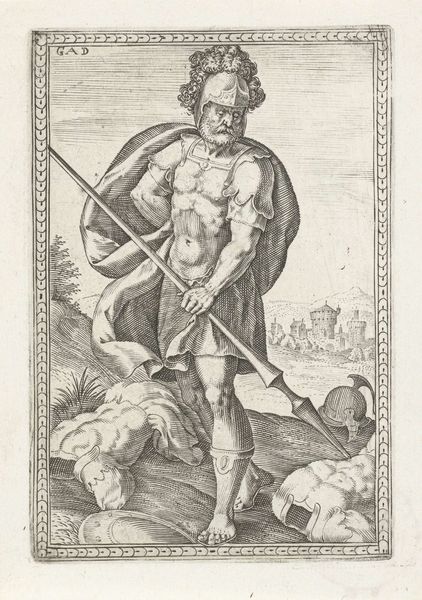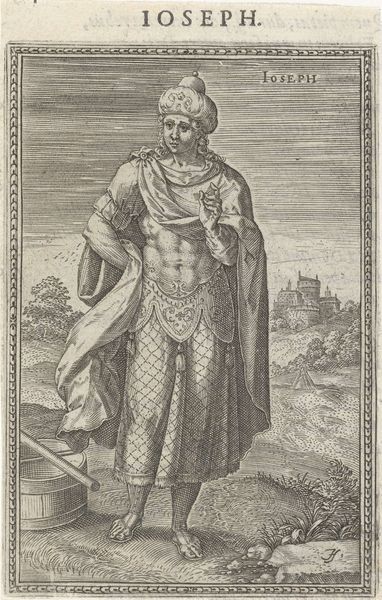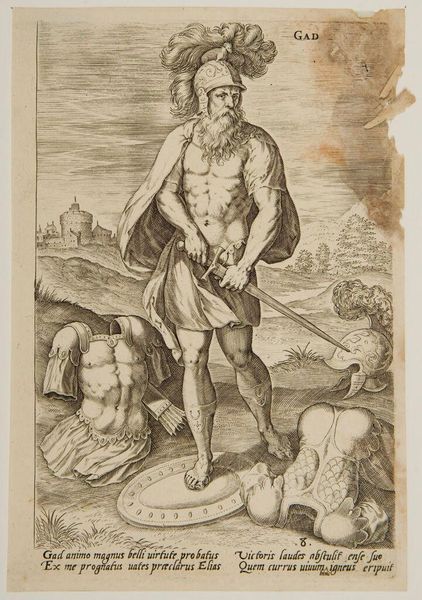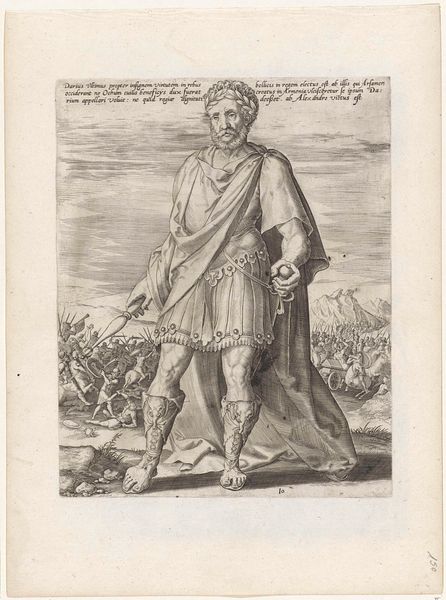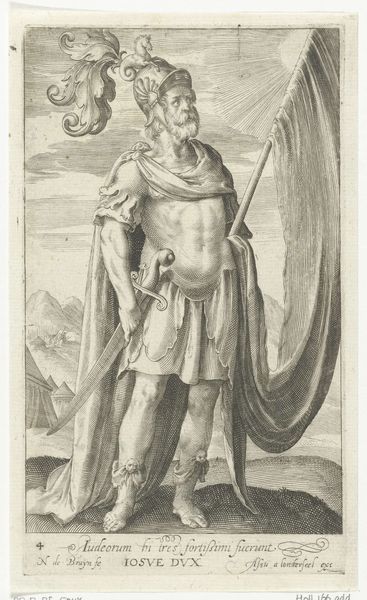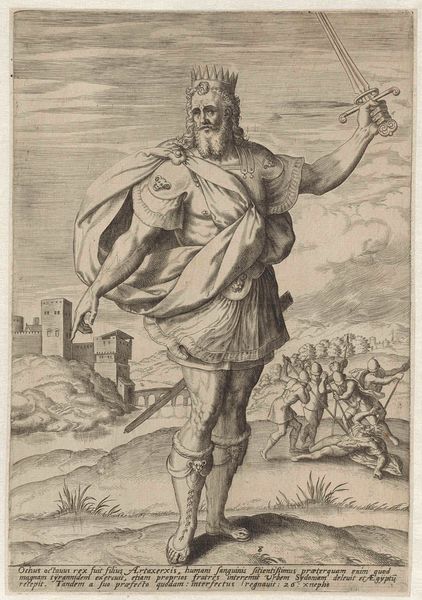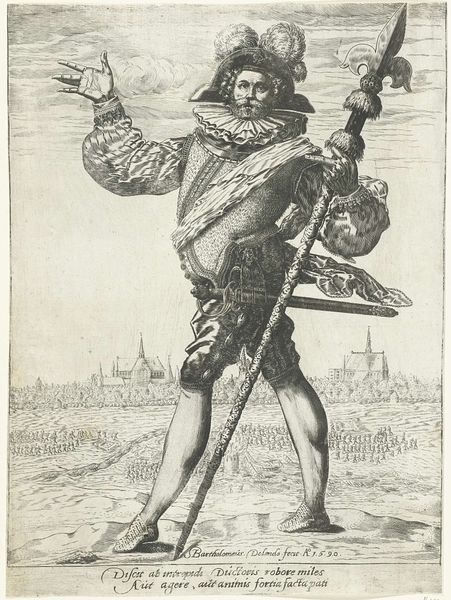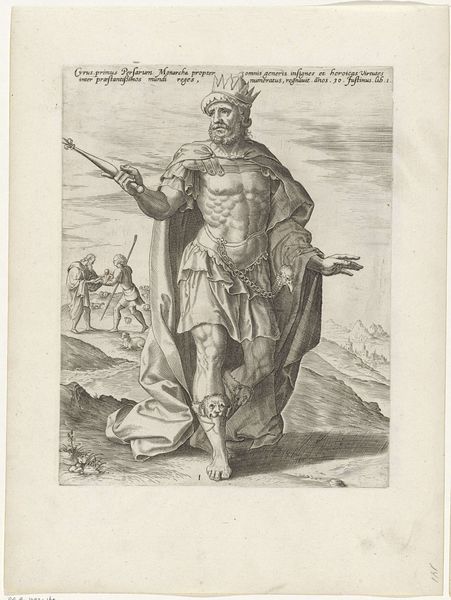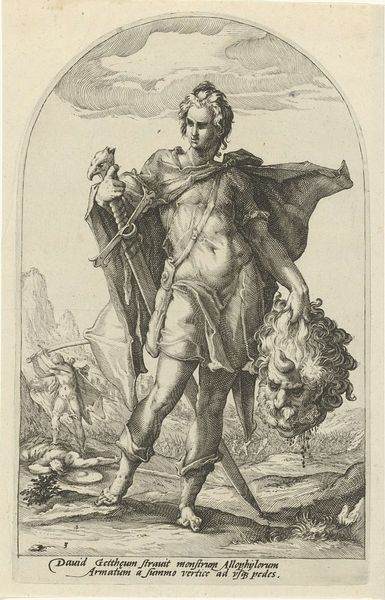
print, engraving
#
portrait
# print
#
mannerism
#
figuration
#
portrait drawing
#
history-painting
#
academic-art
#
engraving
Dimensions: height 286 mm, width 198 mm
Copyright: Rijks Museum: Open Domain
Curator: Look at the sheer physicality rendered in this print; the exaggerated musculature of King Artaxerxes I is immediately striking. Editor: It's interesting how the artist presents Artaxerxes – this idealization, especially juxtaposed with what looks like the toil of building behind him, suggests a careful construction of power and a deliberate removal from the means of labor. Curator: Precisely. This engraving, dating somewhere between 1547 and 1585, reveals a meticulous labor process. The engraving technique, the precise cuts into the metal plate – each line, each shadow painstakingly placed to create volume and texture. Look at how the textures define the skin and fabrics. The lines that shape the figure are as important as the figure itself. Editor: Absolutely. It draws my attention to the power dynamics embedded within artistic creation itself. Who controlled the resources, who had access to the printing press? Considering it's an anonymous work, how does that anonymity shape our understanding of its purpose and intended audience, especially when its theme and production situate it at the intersection of portraiture and history-painting? Curator: Right. The materials themselves - the paper, the ink - all speak to a certain level of privilege, allowing the distribution of imagery and ideas, and we can think about how this relates to social control. Editor: I’m thinking of the deliberate framing and the text accompanying the portrait, suggesting his longhandedness as a symbol of strength. The print could also be read as an act of documentation, intended for posterity; this isn't simply an image of a king; it's an assertion of dynastic continuity, rendered into a reproducible, distributable format. Curator: Indeed, the scale of reproduction expands the reach of political ideology. The work, itself, serves to extend political control through an increased consumption. Editor: A fascinating case study for considering art as a manufactured narrative, both aesthetic and political. Curator: I agree, highlighting the interconnected relationship of process and the potential impact within an art context.
Comments
No comments
Be the first to comment and join the conversation on the ultimate creative platform.
